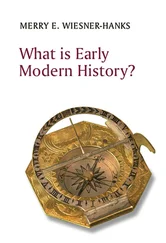R. Nisbet Bain - The Cambridge Modern History
Здесь есть возможность читать онлайн «R. Nisbet Bain - The Cambridge Modern History» — ознакомительный отрывок электронной книги совершенно бесплатно, а после прочтения отрывка купить полную версию. В некоторых случаях можно слушать аудио, скачать через торрент в формате fb2 и присутствует краткое содержание. Жанр: unrecognised, на английском языке. Описание произведения, (предисловие) а так же отзывы посетителей доступны на портале библиотеки ЛибКат.
- Название:The Cambridge Modern History
- Автор:
- Жанр:
- Год:неизвестен
- ISBN:нет данных
- Рейтинг книги:4 / 5. Голосов: 1
-
Избранное:Добавить в избранное
- Отзывы:
-
Ваша оценка:
- 80
- 1
- 2
- 3
- 4
- 5
The Cambridge Modern History: краткое содержание, описание и аннотация
Предлагаем к чтению аннотацию, описание, краткое содержание или предисловие (зависит от того, что написал сам автор книги «The Cambridge Modern History»). Если вы не нашли необходимую информацию о книге — напишите в комментариях, мы постараемся отыскать её.
The first series was planned by Lord Acton and edited by him with Stanley Leathes, Adolphus Ward and George Prothero.
The Cambridge Modern History Collection features all five original volumes:
Volume I: The Renaissance
Volume II: The Reformation, the End of the Middle Ages
Volume III The Wars of Religion
Volume IV: The 30 Years' War
Volume V: The Age of Louis XIV
The Cambridge Modern History — читать онлайн ознакомительный отрывок
Ниже представлен текст книги, разбитый по страницам. Система сохранения места последней прочитанной страницы, позволяет с удобством читать онлайн бесплатно книгу «The Cambridge Modern History», без необходимости каждый раз заново искать на чём Вы остановились. Поставьте закладку, и сможете в любой момент перейти на страницу, на которой закончили чтение.
Интервал:
Закладка:
The diffusion of the doctrine of the Reformers seems to have been one of the causes which slackened and weakened the resistance of Hungary to the Ottoman invasion. But the main cause was that King Louis was not competent as ruler or as leader; he had not the trust of his kingdom, and he was unable to cope with the opposition and dilatoriness of the Diet. The transactions of the Diet during the crisis are a melancholy comedy: the King and the councillors severally disclaiming any responsibility for consequences of the coming invasion and the safety of the realm. Help from his neighbours Louis could not expect. Venice had congratulated Solyman on the capture of Rhodes, and was still on most friendly terms with him; Poland had just concluded a peace with him. The distant kingdoms of England and Portugal promised subsidies, but it was on his brother-in-law Charles V that Louis depended. Charles sent reinforcements, but they came too late, two days after the decision of the campaign. The most competent general the Hungarians could have chosen would have been John Zapolya, the voivod of Transylvania, but he was not trusted. The command devolved upon Louis himself in default of a better man; and at the start want of money rendered it difficult to mobilise. It was decided to defend the line of the Save, but when it came to the point the lukewarmness of the magnates caused this plan to be abandoned. The only really energetic man in the land was Archbishop Tomory, who did what he could to make defensible Peterwardein, the chief fortress of the Danube between the mouths of the Drave and the Save.
The Sultan set out towards the end of April with an army of 100,000 and 300 cannons; and his diary chronicles the heavy rainfalls which made his advance painful and slow, so that he did not reach Belgrade till July 9, when he was joined by his infantry (the Janissaries) which had been transported up the Danube by a flotilla. Ibrahim, the Grand Vezir, had been sent forward to take Peterwardein, and it was in Turkish hands before the end of July. After the fall of this bulwark, a bloody sword was carried, according to custom, throughout the Hungarian land, summoning men to help their country in the hour of her utmost jeopardy. Zapolya was waiting uncertain what to do. Receiving a command from the King to join the army he obeyed slowly, but only reached Szegedin on the Theiss where he remained. There is not the least proof that he was acting in collusion with the Turk; the most that can be said is that he was secretly pleased at the embarrassing situation of King Louis. The Hungarian army advanced to Tolna, and all told they were perhaps fewer than 30,000. It was now a question whether the line of the Drave should be held; but while the Hungarians were deliberating, the Turks had crossed that river at Essek (August 20-21). The Chancellor Broderith gave the counsel to fall back to Buda, but messages from Tomory (at Neusatz) urged the King to give battle in the plain of Mohacs (south of Tolna) where he had taken up a position. On August 29 the Turks were known to be not far off, and the Hungarians spread out their two lines—a long thin line of foot in front, flanked by cavalry, and a rear line mainly of cavalry. The plan was that the foot should open the attack all along the line, and when their attack began to tell the horse should charge. In the afternoon the Rumelians who formed the vaward of the Turks became visible; they had no intention of fighting that day, and were about to camp. The Hungarian centre and left attacked and dispersed them; the cavalry then struck in, and rode forward stimulated by the first easy success. But nothing save a freak of chance could have averted the discomfiture of the Christian army; for the battle was controlled by no commander, and the divisions acted independently. The cavalry were beaten back by the steady fire of the enemy; and the Hungarian right wing, when the Turks spread out leftwards and rounded on its flank, retired towards the Danube. Twenty thousand of the Hungarian army were killed. The King escaped from the field, but in crossing a brook his horse slipped on the bank and he was drowned. The Sultan advanced and took possession of Buda, but he did not leave a garrison; he was not yet prepared to annex Hungary. His army was somewhat demoralised, and grave news came of troubles in Asia Minor.
John Zapolya was crowned King, November 10, supported by a large party; and his rivalry with Ferdinand, the late King’s brother-in-law, who claimed the throne, determined the course of the following events. At first things looked ill for Zapolya. Ferdinand drove him out of Buda back to Transylvania, and was himself crowned at Stuhlweissenburg (November, 1527). Then Zapolya turned for help to the Sultan; who after protracted parleys concluded a treaty of alliance with him (February, 1528). Ferdinand also sent ambassadors; but they pleaded in vain, and were even detained under arrest at the suggestion of some Venetian envoys. On the other hand Francis I concluded a treaty with Zapolya, who promised that if he died without male heir the crown of Hungary should descend to the French King’s son, the Duke of Orleans. No French prince was destined ever to sit on the Hungarian throne; but before half a century had passed a grandson of Francis was to wear the crown of Poland, and the political idea was the same.
One of the results of the victory of Mohacs was the consolidation of Ottoman rule in the north-western countries, Bosnia and Croatia. Jajce, which had so long defied the Sultans, was at last taken (1528), and many other fortresses of less note. Early in 1529 it was known that Solyman was preparing for a grand expedition northwards in that year. Germany was alive to the danger. Luther changed his attitude and acknowledged the necessity of war against the Turks, while he insisted that all the disasters which had befallen Christendom from Varna to Mohacs had been due to the interference of Popes and bishops—language which the deeds of Archbishop Paul Tomory of Kalocsa, the defender of southern Hungary, might have been held to belie.
Solyman marched northwards—we can again follow his movements in his own diary—at the head of an immense army, set at 250,000 men, an exaggerated figure. King John met him on the field of Mohacs, and the crown of St Stephen on this occasion passed for safe keeping into the possession of Solyman, who never gave it back. Buda was easily taken, and the host advanced up the Danube, avoiding Pressburg, against Vienna. The garrison numbered 22,000; the walls were not strong; and Charles V, who ought to have hastened to the defence of the eastern mark, was in Italy. Ferdinand waited in terrible anxiety at Linz. He believed that it was the purpose of Solyman to winter in Vienna and spend three years in the subjugation of Germany. The garrison of Vienna in the meanwhile made suitable arrangements for encountering the storm. The houses outside the walls were levelled, the streets within torn up, buildings unroofed. The city was surrounded on September 26 and the operations began with mining. But the difficulty of procuring provisions and the approach of winter rendered the army impatient; and, when successive attempts at storming had been repelled with grave loss (October 9-12), it was decided to retreat after one more effort—especially as help was approaching, about 60,000 men from Bohemia, Moravia, and Germany. A half-hearted attack closed the episode of the first siege of Vienna, and at midnight the signal was given for a retreat which was marked by every horror. On December 16 Solyman records, he returned “fortunately” to Stambul. He had failed in Austria, but Hungary lay at his feet, and John Zapolya, though not a tributary, was absolutely dependent on his support.
The Ottoman State is marked off from the rest of Europe by a legal and political system which is based entirely on religious foundations. In Christian countries religion has frequently modified the principles of secular law; but in Turkey the problem of legislators has been to relax or adjust the interpretation of the canons of Islam, so as to permit it to take its place among European States, and to establish a modus vivendi with neighbouring unbelievers. Under Mohammad II a general code of law called “the Pearl” was drawn up by the Molla Khusrev in 1470; but this was superseded by Ibrahim Haleby of Aleppo, who in the reign of Solyman compiled a code which he named “the Confluence of the Seas” (Multeka-ul-ubhar). The sources from which these codes were compiled are four: the Koran; the Sunnas (the sayings of the Prophet which depend on early tradition, and inferences from his actions and his silences); the “apostolic laws” (explanations and decisions given by the Prophet’s apostles and chief disciples in theological and moral matters); and the Kiyas (canonical decisions of “the four great Imams,” who lived in the eighth and ninth centuries).
Читать дальшеИнтервал:
Закладка:
Похожие книги на «The Cambridge Modern History»
Представляем Вашему вниманию похожие книги на «The Cambridge Modern History» списком для выбора. Мы отобрали схожую по названию и смыслу литературу в надежде предоставить читателям больше вариантов отыскать новые, интересные, ещё непрочитанные произведения.
Обсуждение, отзывы о книге «The Cambridge Modern History» и просто собственные мнения читателей. Оставьте ваши комментарии, напишите, что Вы думаете о произведении, его смысле или главных героях. Укажите что конкретно понравилось, а что нет, и почему Вы так считаете.












